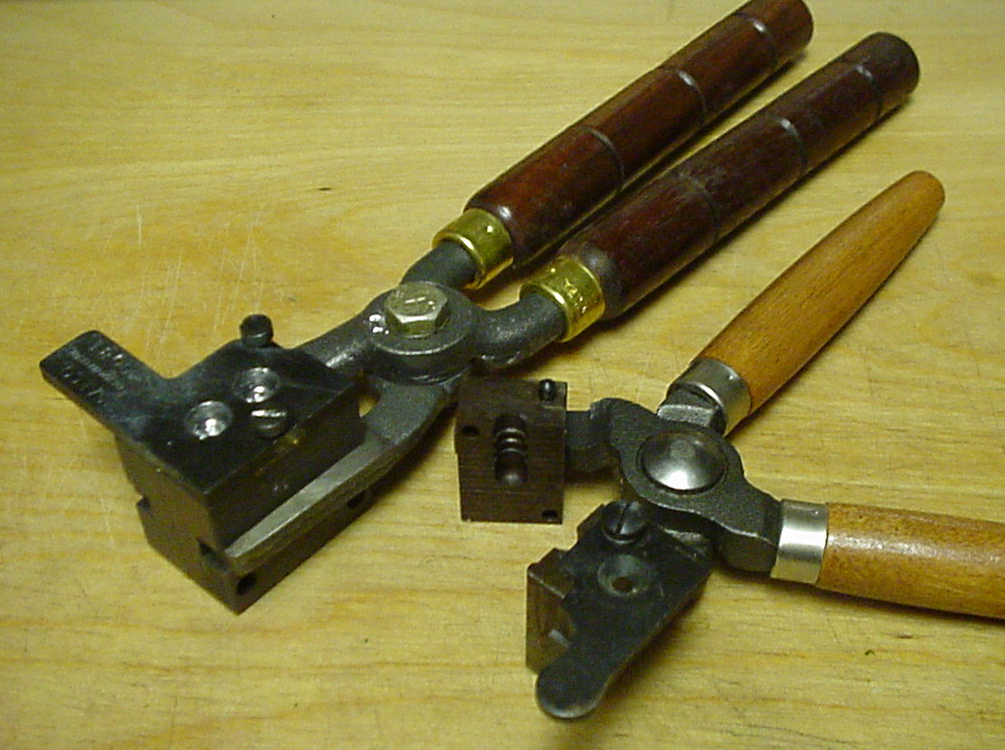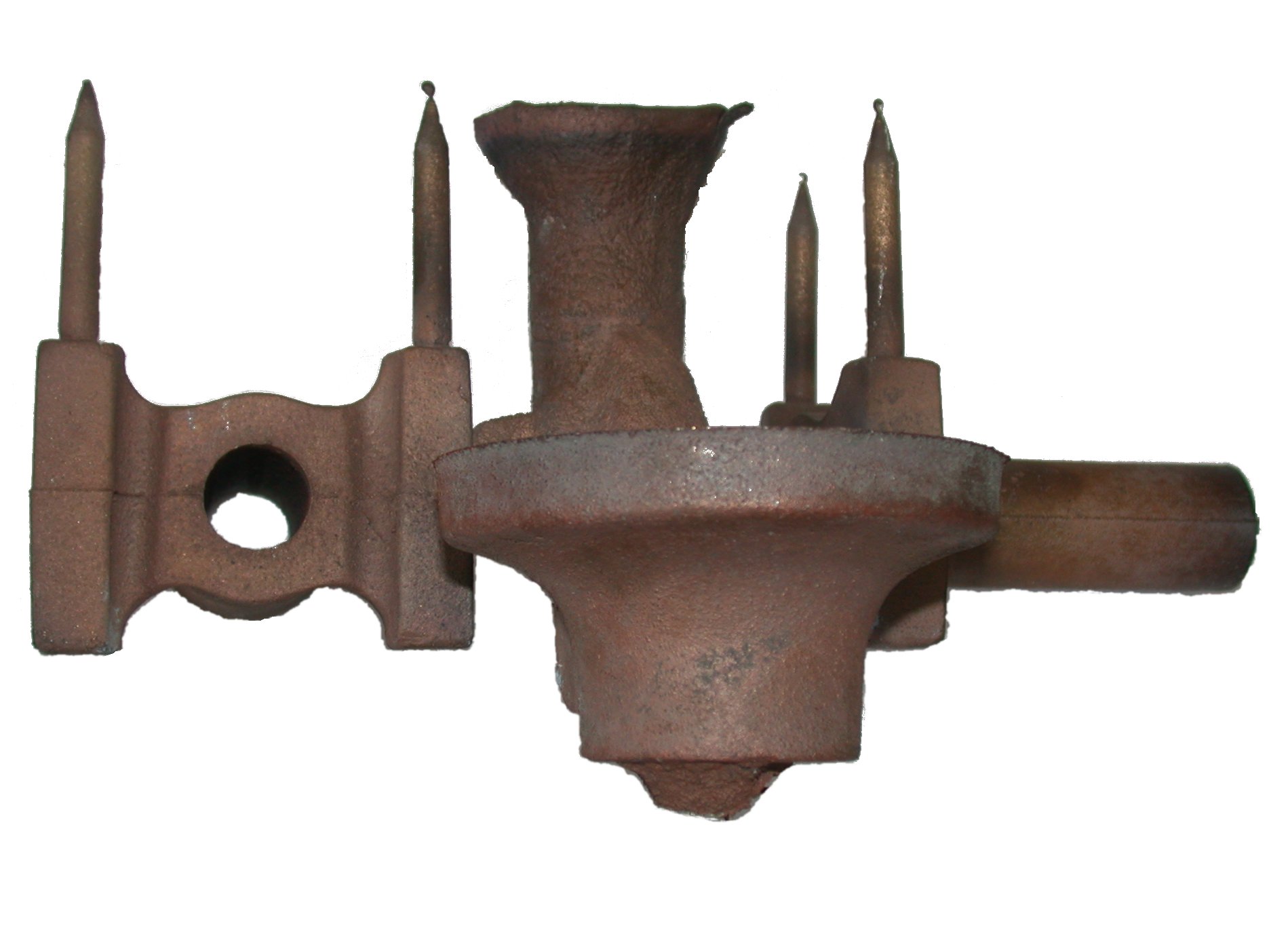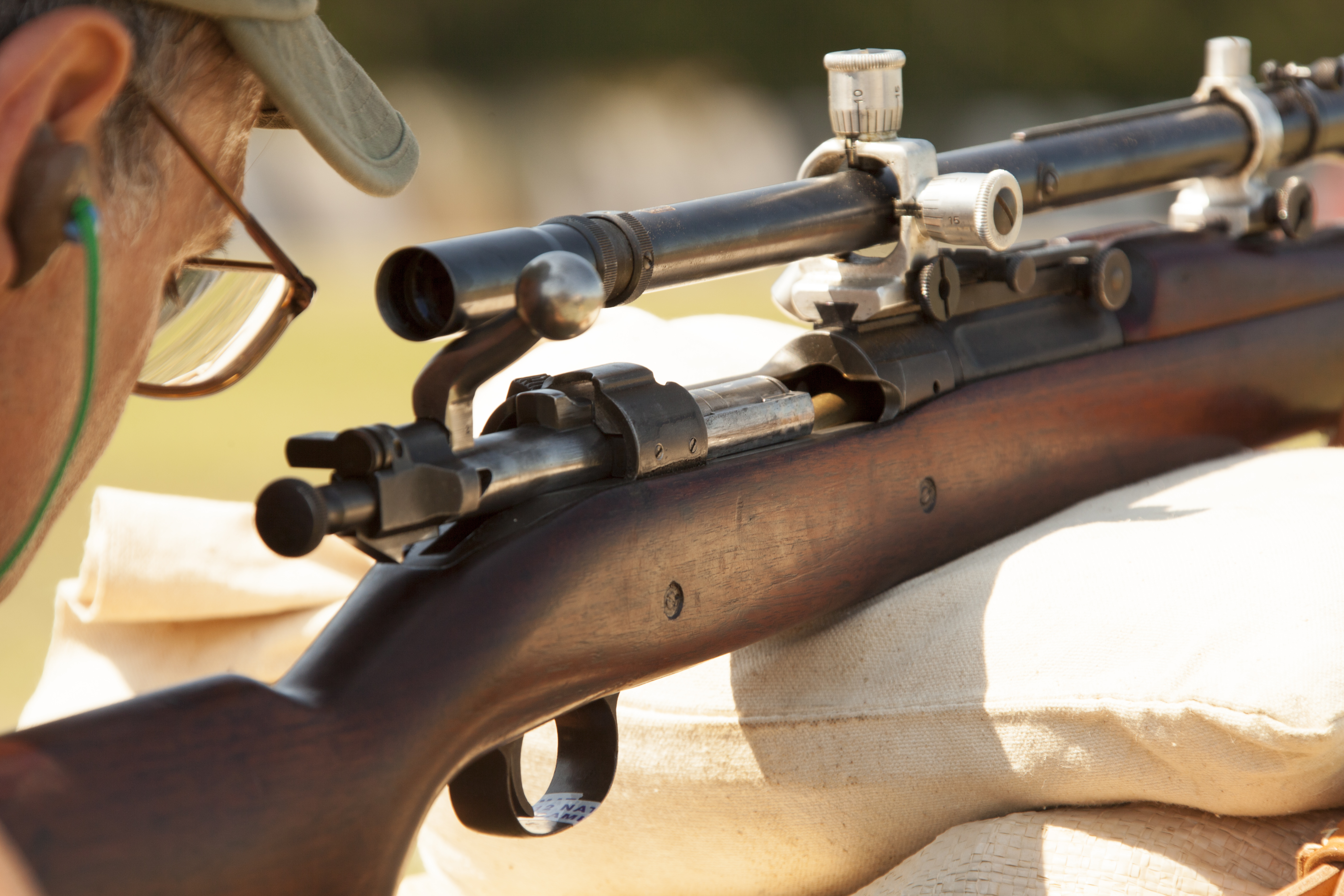|
Hand Mould
A hand mold is a simple mold used for low quantity work. It is used in the injection molding and the printing industry. It is made by a hand injection molding machine. It is a simple machine which contains a barrel, handle, nozzle, mold and heaters. Printing In the printing industry, a hand mold specifically refers to a two-part mold used for casting hand-made type. Inside the mold is a matrix. In particular, it refers to a system for casting movable type, pioneered by Johannes Gutenberg, which was widely used in the early era of printing in Europe (15th-16th century). In this method, the type was made by punching a letter-shaped cavity in a matrix made of some soft metal (typically copper). Then this matrix would be held in the lower part of the mold, the upper part would close on it, and molten type metal would be poured into the cavity. Using the hand mold, the printer could quickly make any additional type he might need.Meggs, Philip B. ''A History of Graphic Design.'' Joh ... [...More Info...] [...Related Items...] OR: [Wikipedia] [Google] [Baidu] |
Steel
Steel is an alloy made up of iron with added carbon to improve its strength and fracture resistance compared to other forms of iron. Many other elements may be present or added. Stainless steels that are corrosion- and oxidation-resistant typically need an additional 11% chromium. Because of its high tensile strength and low cost, steel is used in buildings, infrastructure, tools, ships, trains, cars, machines, electrical appliances, weapons, and rockets. Iron is the base metal of steel. Depending on the temperature, it can take two crystalline forms (allotropic forms): body-centred cubic and face-centred cubic. The interaction of the allotropes of iron with the alloying elements, primarily carbon, gives steel and cast iron their range of unique properties. In pure iron, the crystal structure has relatively little resistance to the iron atoms slipping past one another, and so pure iron is quite ductile, or soft and easily formed. In steel, small amounts of carbon, other ... [...More Info...] [...Related Items...] OR: [Wikipedia] [Google] [Baidu] |
Plastics Industry
The plastics industry manufactures polymer materials—commonly called plastics—and offers services in plastics important to a range of industries, including packaging, building and construction, electronics, aerospace, and transportation. It is part of the chemical industry. In addition, as mineral oil is the major constituent of plastics, it therefore forms part of the petrochemical industry. Besides plastics production, plastics engineering is an important part of the industrial sector. The latter field is dominated by engineering plastic as raw material because of its better mechanical and thermal properties than the more widely used commodity plastics. Companies Markets According to PlasticsEurope, the top three markets for plastics are packaging, building and construction, and automotive. Production Plastics production has been growing globally. The numbers include thermoplastics and polyurethanes, as well as thermosets, adhesives, coatings and sealants and PP-fibe ... [...More Info...] [...Related Items...] OR: [Wikipedia] [Google] [Baidu] |
Casting (manufacturing)
Casting is a manufacturing process in which a liquid material is usually poured into a mold, which contains a hollow cavity of the desired shape, and then allowed to solidify. The solidified part is also known as a ''casting'', which is ejected or broken out of the mold to complete the process. Casting materials are usually metals or various ''time setting'' materials that cure after mixing two or more components together; examples are epoxy, concrete, plaster and clay. Casting is most often used for making complex shapes that would be otherwise difficult or uneconomical to make by other methods. Heavy equipment like machine tool beds, ships' propellers, etc. can be cast easily in the required size, rather than fabricating by joining several small pieces. Casting is a 7,000-year-old process. The oldest surviving casting is a copper frog from 3200 BC. History Throughout history, metal casting has been used to make tools, weapons, and religious objects. Metal casting history and de ... [...More Info...] [...Related Items...] OR: [Wikipedia] [Google] [Baidu] |
Sprue (manufacturing)
A sprue is the vertical passage through which liquid material is introduced into a mold and it is a large diameter channel through which the material enters the mold. It connects the pouring basin to the runner. In many cases it controls the flow of material into the mold. During casting or molding, the material in the sprue will solidify and need to be removed from the finished part. It is usually tapered downwards to minimize turbulence and formation of air bubbles. Casting In casting, a sprue is the passage through which a molten material is introduced into a mold, and the term also refers to the excess material which solidifies in the sprue passage. Function Sprues can serve as filters, as heat sinks, and as feeders. Bronze, in particular, has a high shrinkage rate as it is cooling. A sprue is tapered with its bigger end at the top to receive the liquid metal, the smaller end is connected to the runner. Sprue design The design of the sprue gating and runner is also essent ... [...More Info...] [...Related Items...] OR: [Wikipedia] [Google] [Baidu] |
Chamber (firearms)
In firearms, the chamber is the cavity at the back end of a breechloader's barrel or cylinder, where the cartridge is inserted before being fired. The rear opening of the chamber is the breech, and is sealed by the breechblock or the bolt. Function Rifles and pistols generally have a single chamber integral to their barrels, but revolvers have multiple chambers in their cylinder, and no chamber in their barrel. Thus, rifles and pistols can usually still be fired with the magazine removed as long as a cartridge is inserted into the chamber, while a revolver cannot be fired at all with its cylinder swung out. The act of ''chambering'' a cartridge means the insertion of a round into the chamber, either manually or through the action of the weapon, e.g., pump-action, lever-action, bolt action, or Autoloading operation generally in anticipation of firing the weapon, without need to "load" the weapon upon decision to use it (reducing the number of ''actions'' needed to disch ... [...More Info...] [...Related Items...] OR: [Wikipedia] [Google] [Baidu] |
Gauge (bore Diameter)
The gauge (or commonly bore in British English) of a firearm is a unit of measurement used to express the inner diameter (bore diameter) of the barrel. Gauge is determined from the weight of a solid sphere of lead that will fit the bore of the firearm and is expressed as the multiplicative inverse of the sphere's weight as a fraction of a pound, e.g., a one-twelfth pound lead ball fits a 12-gauge bore. Thus there are twelve 12-gauge balls per pound, etc. The term is related to the measurement of cannon, which were also measured by the weight of their iron round shot; an 8-pounder would fire an 8 lb (3.6 kg) ball. Gauge is commonly used today in reference to shotguns, though historically it was also used in large double rifles, which were made in sizes up to 2 bore during their heyday in the 1880s, being originally loaded with black powder cartridges. These very large rifles, called "elephant guns", were intended for use primarily in Africa and Asia for hunting lar ... [...More Info...] [...Related Items...] OR: [Wikipedia] [Google] [Baidu] |
Muzzleloader
A muzzleloader is any firearm into which the projectile and the propellant charge is loaded from the muzzle of the gun (i.e., from the forward, open end of the gun's barrel). This is distinct from the modern (higher tech and harder to make) designs of breech-loading firearms. The term "muzzleloader" applies to both rifled and smoothbore type muzzleloaders, and may also refer to the marksman who specializes in the shooting of such firearms. The firing methods, paraphernalia and mechanism further divide both categories as do caliber (from cannons to small-caliber palm guns). Modern muzzleloading firearms range from reproductions of sidelock, flintlock and percussion long guns, to in-line rifles that use modern inventions such as a closed breech, sealed primer and fast rifling to allow for considerable accuracy at long ranges. Modern mortars use a shell with the propelling charge and primer attached at the base. Unlike older muzzleloading mortars, which were loaded the same way as ... [...More Info...] [...Related Items...] OR: [Wikipedia] [Google] [Baidu] |
Handloading
Handloading, or reloading, is the practice of making firearm cartridges by assembling the individual components (case, primer, propellant, and projectile), rather than purchasing mass-assembled, factory-loaded ammunition. The term ''handloading'' is the more general term, and refers generically to the manual assembly of ammunition. ''Reloading'' refers more specifically to handloading using previously fired cases and shells. The terms are often used interchangeably however, as the techniques are largely the same, whether the handloader is using new or recycled components. The differences lie in the initial preparation of cases and shells; new components are generally ready to load, while previously fired components often need additional procedures, such as cleaning, removal of expended primers, or the reshaping and resizing of brass cases. Reasons for handloading Economy, increased performance and accuracy, commercial ammunition shortages, and hobby interests are all ... [...More Info...] [...Related Items...] OR: [Wikipedia] [Google] [Baidu] |
Cast Bullet
A cast bullet is made by allowing molten metal to solidify in a Molding (process), mold. Most cast bullets are made of lead alloyed with tin and antimony; but zinc alloys have been used when lead is scarce, and may be used again in response to concerns about lead toxicity. Most commercial bullet manufacturers use swaging in preference to casting, but bullet casting remains popular with handloading, handloaders. History Firearms projectiles were being cast in the 14th century. Iron was used for cannon, while lead was the preferred material for small arms. Lead was more expensive than iron, but it was softer and less damaging to the relatively weak iron barrels of early muskets. Lead could be cast in a ladle over a wood fire used for cooking or home heating, while casting iron required higher temperatures. Greater density of lead allowed lead bullets to retain velocity and energy better than iron bullets of the same weight and initial firing velocity. Swaging, rather than casting ... [...More Info...] [...Related Items...] OR: [Wikipedia] [Google] [Baidu] |
Brass
Brass is an alloy of copper (Cu) and zinc (Zn), in proportions which can be varied to achieve different mechanical, electrical, and chemical properties. It is a substitutional alloy: atoms of the two constituents may replace each other within the same crystal structure. Brass is similar to bronze, another copper alloy, that uses tin instead of zinc. Both bronze and brass may include small proportions of a range of other elements including arsenic (As), lead (Pb), phosphorus (P), aluminium (Al), manganese (Mn), and silicon (Si). Historically, the distinction between the two alloys has been less consistent and clear, and modern practice in museums and archaeology increasingly avoids both terms for historical objects in favor of the more general "copper alloy". Brass has long been a popular material for decoration due to its bright, gold-like appearance; being used for drawer pulls and doorknobs. It has also been widely used to make utensils because of its low melting ... [...More Info...] [...Related Items...] OR: [Wikipedia] [Google] [Baidu] |
Mold (manufacturing)
Molding (American English) or moulding (British and Commonwealth English; see spelling differences) is the process of manufacturing by shaping liquid or pliable raw material using a rigid frame called a mold or matrix. This itself may have been made using a pattern or model of the final object. A mold or mould is a hollowed-out block that is filled with a liquid or pliable material such as plastic, glass, metal, or ceramic raw material. The liquid hardens or sets inside the mold, adopting its shape. A mold is a counterpart to a cast. The very common bi-valve molding process uses two molds, one for each half of the object. Articulated molds have multiple pieces that come together to form the complete mold, and then disassemble to release the finished casting; they are expensive, but necessary when the casting shape has complex overhangs. Piece-molding uses a number of different molds, each creating a section of a complicated object. This is generally only used for larger a ... [...More Info...] [...Related Items...] OR: [Wikipedia] [Google] [Baidu] |






